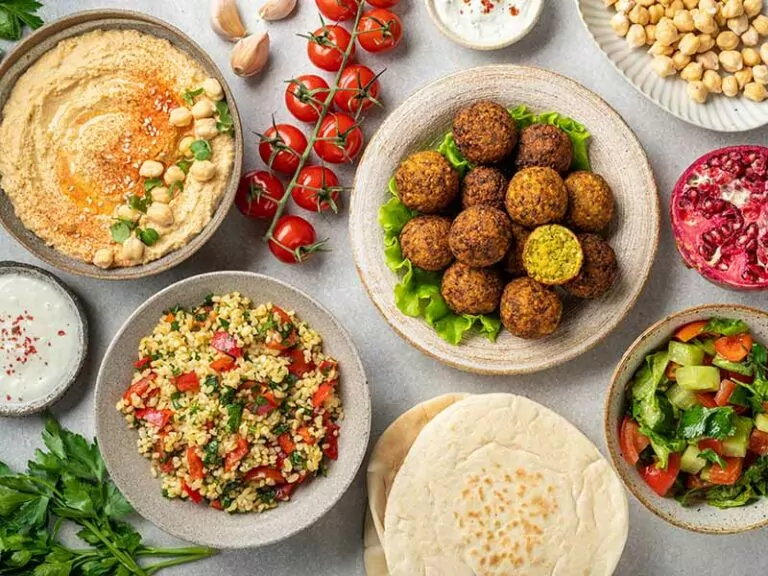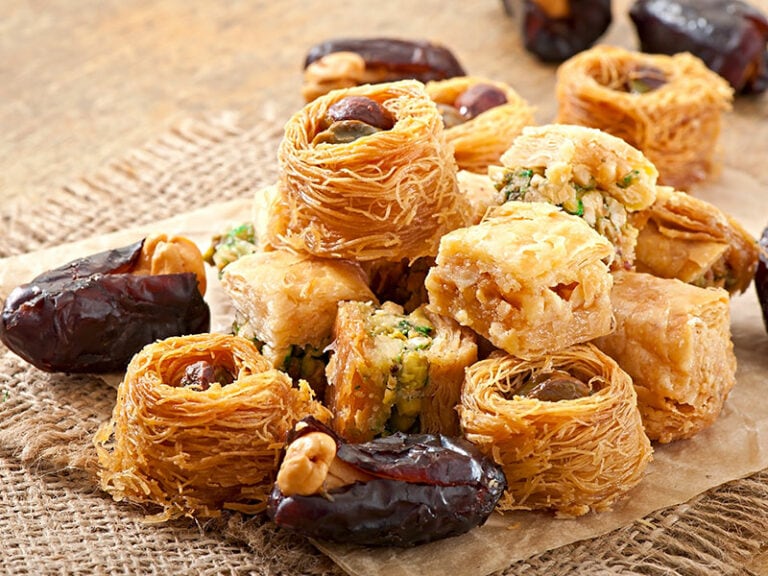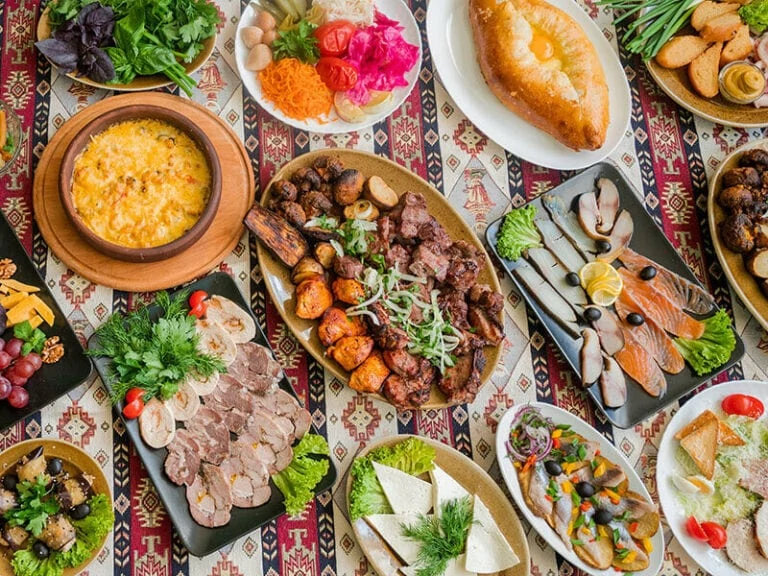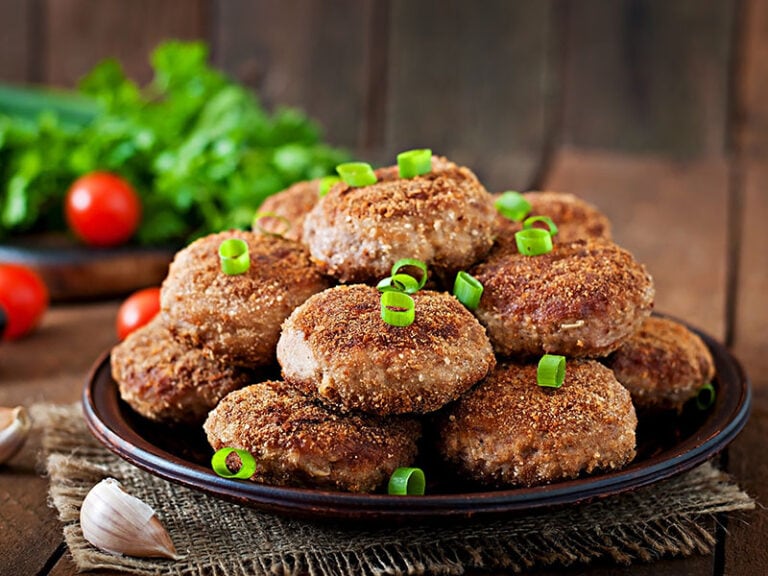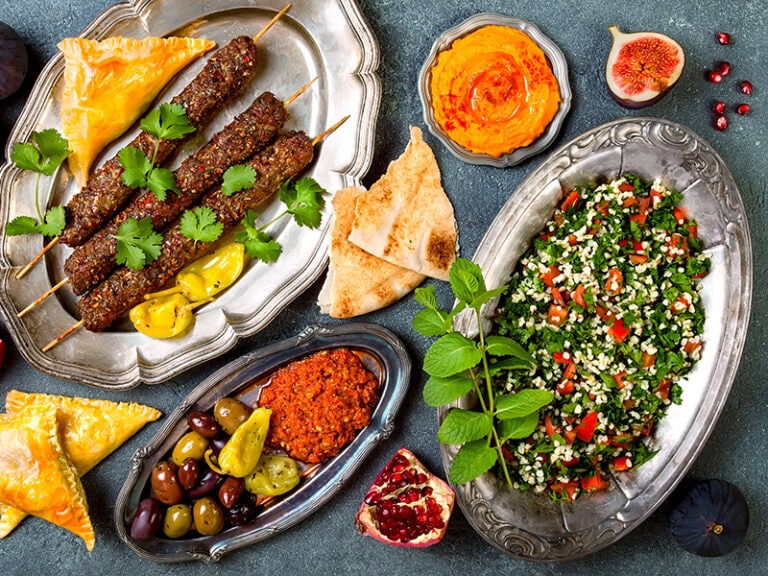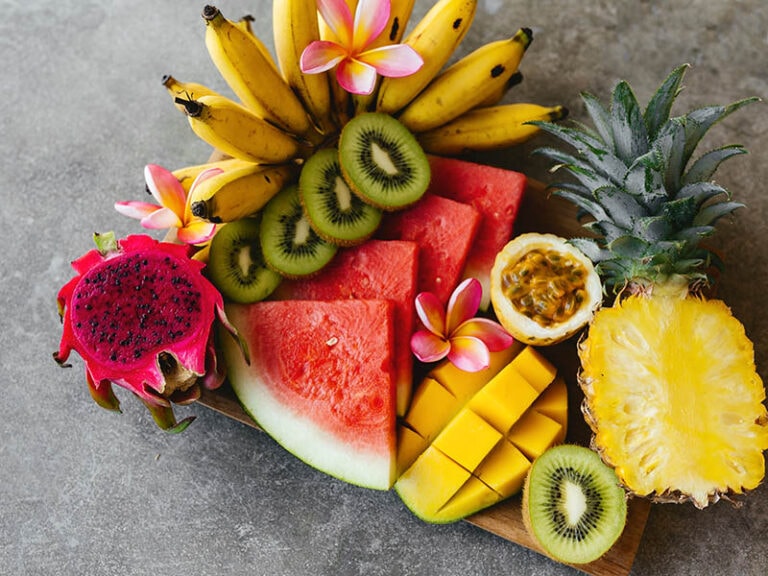Middle Eastern drinks offer a symphony of flavors that can instantly transport you to an oasis of cultural discovery. Today, more than ever, the global beverage scene is thirsting for diversity and authenticity. That’s where I believe these traditional beverages can quench that thirst.
Delving into this article, you’ll get to savor the richness of tradition, uncover hidden health benefits, and get acquainted with authentic beverages. A new world of flavor awaits, so don’t hesitate to scroll down now!
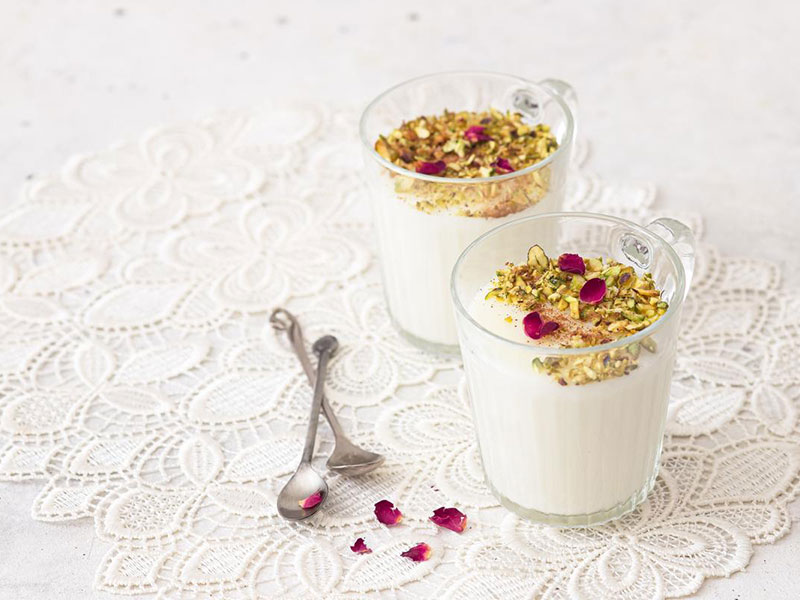
Introduction to Middle Eastern Drinks
Middle Eastern drinks are a dynamic and vibrant representation of the region’s rich cultural history and diverse culinary traditions.
These beverages, whether hot or cold, alcoholic or non-alcoholic, are steeped in tradition and are integral to daily life, celebratory events, and hospitality rituals. They are symbols of the region’s heritage, its multifaceted identities, and the shared experiences of its people.
Ranging from the aromatic Turkish coffee and the strong brews of Persian tea to the sweet allure of Egyptian Hibiscus tea and the anise-flavored Arak, Middle Eastern drinks offer a taste of the region’s palates and lifestyles.
Cultural Significance of Middle Eastern Drinks
Middle Eastern drinks carry historical significance and often reflect traditions passed down through generations.
For instance, the ceremonial preparation and serving of Arabic coffee (Qahwa) is a symbol of hospitality in Arabian society. Similarly, the tea-drinking culture, whether the Çay in Turkey or the spiced tea blends in Iran, signifies leisure and friendship and often facilitates social gatherings.
Certain beverages have connections to religious observances. For instance, during Ramadan, the Islamic month of fasting, drinks like Tamar Hindi and Qamar al-Din are particularly popular. They are consumed during Iftar, the meal that breaks the fast.
Alcoholic beverages like Arak, a traditional Middle Eastern spirit, are often served with typical Middle Eastern foods, such as mezza. Meanwhile, non-alcoholic drinks such as Ayran and Doogh are everyday refreshments, often served alongside meals.
In essence, Middle Eastern drinks are not merely about quenching thirst; they are deeply woven into the cultural and social fabric of the region. Each drink tells a story, often linked to history, geography, and cultural traditions, making them an integral part of the Middle Eastern identity.
Turkish Drinks
Turkish Coffee
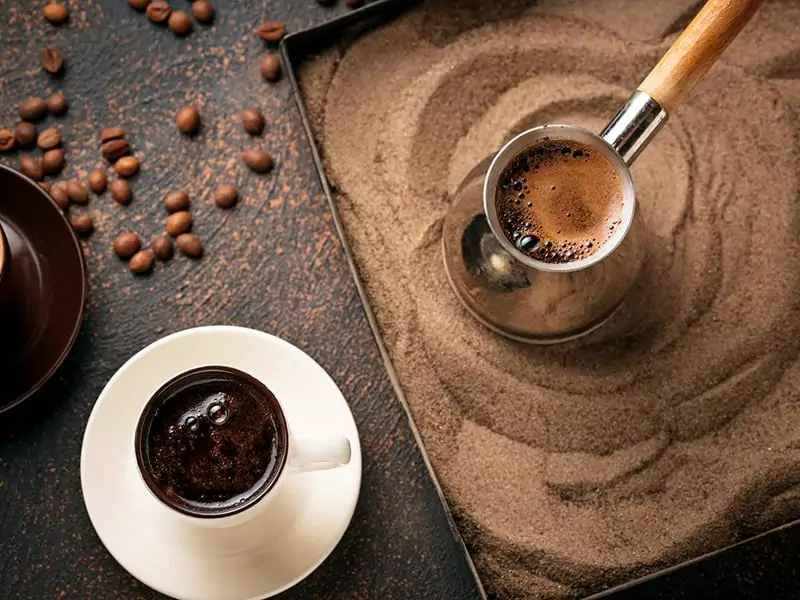
Turkish coffee is an iconic Turkish refreshment that’s popular around the world. A precious relic from the Ottoman Empire, it’s like sipping history itself. These Arabica beans are ground to an almost powdery consistency, as fine as a soft whisper.
They’re brewed in a cezve, a traditional copper pot that is as beautiful as it is functional. No cream or milk here, just bold, aromatic flavors and a little sugar if you prefer.
This coffee is thicker, bolder, and far more fragrant than your usual coffee, yet surprisingly moderate in strength.
Though it has less caffeine than espresso, its robust taste never fails to awaken my senses. You’ll often find coffee dregs at the bottom, called telve. They are technically inedible, yet many indulge, myself included—it’s a guilty pleasure!
My favorite spots to enjoy this delicacy are small, traditional coffee houses tucked away in the old parts of cities.
Kurdish Coffee
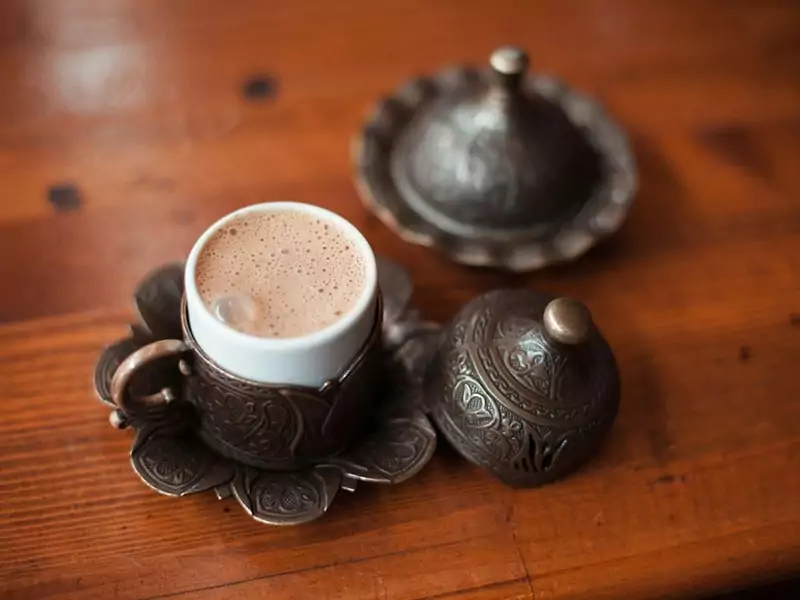
Brewed from ground roasted terebinth fruits (Pistacia terebinthus), Kurdish coffee, or terebinth coffee, is a departure from the norm.
Despite being called ‘coffee,’ it is completely caffeine-free, making it my go-to when I’m craving warmth and flavor without the buzz. The fruit itself is related to the pistachio; thus, it is also known as pistachio coffee.
I adore its nutty taste, subtly enhanced with hints of spice and chocolate. Adding a touch of milk or sugar enhances the experience.
You’ll find it popularly served in many parts of Turkey. When you’re there, seek out local cafes for an authentic cup. Or, if you’re adventurous, try brewing it at home.
Turkish Tea

Turkey, the highest tea-consuming nation per capita [1], warmly embraces everyone with a cup of çay (pronounced chai), also known as Turkish tea.
Brewing a rich cup of this tea variety, preferably Rize type, is an art form performed with a dual teapot that perfectly traps heat and flavors. It results in a strong, piping-hot infusion served in charming tulip-shaped glasses.
This tea variation is named after the Rize Province in northeast Turkey, where it often thrives. There is no milk or cream for serving, but a cube or two of sugar is an absolute must.
You’d need to wait patiently before taking your first sip—it’s a lesson in the joy of anticipation and avoiding a scalded tongue! So come and visit the tea houses and gardens scattered across Turkey, bustling centers of social life, where each cup fosters community.
Raki (Anise-flavored Brandy)
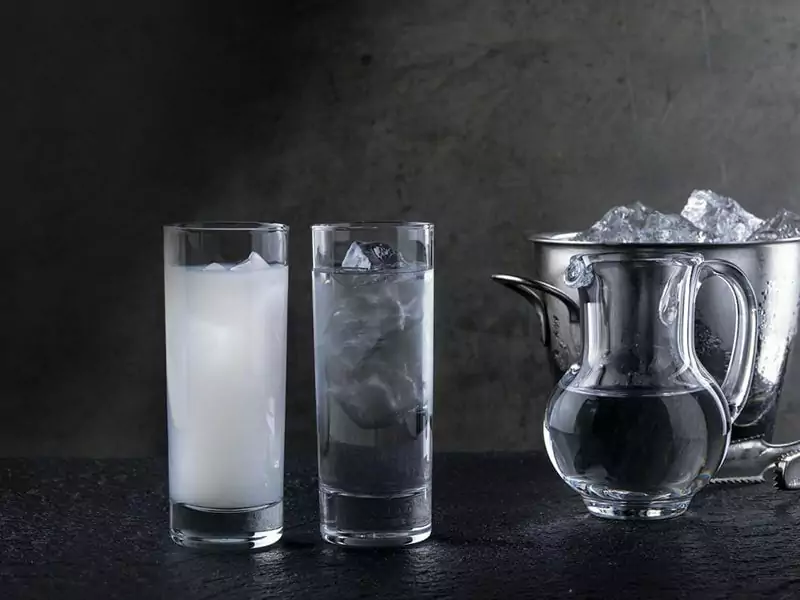
Raki, Turkey’s national drink, is an anise-flavored brandy. It is an essential part of a mezze, enhancing those small plates of appetizers. It’s a potent potion with an ABV of 40%-50%.
My first encounter with Raki was memorable. Its sweet anise notes danced on my palate, served in a tall kadeh filled with ice and chilled water.
I was fascinated to see this clear spirit transform into a milky hue as water met Raki, giving it its beloved nickname – Aslan Sütü or “lion’s milk”. If you’re a newcomer to Raki, remember more ice and water are your friends.
This wonderful drink is enjoyed beyond Turkey’s borders and into the Balkans. It is also a conversation starter and a symbol of hospitality.
Şalgam (Fermented Turnip Water)
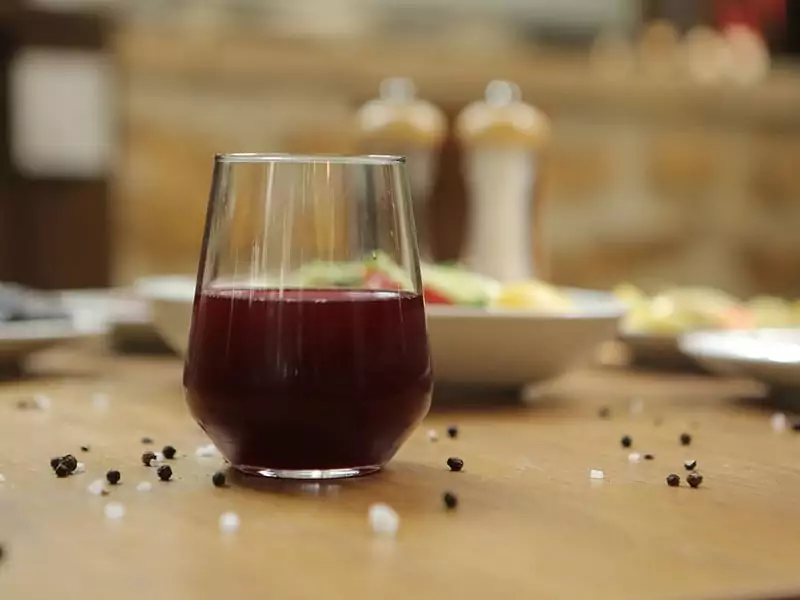
Şalgam, pronounced shal-gam, is a fermented concoction. The name means “turnip”, referring to a shalgam juice/water or turnip juice in English. It combines turnip, water, black carrot, bulgur flour, and some salt, resulting in a cloudy, ruby-red juice.
You’ll find Şalgam widely enjoyed in Turkey, particularly in the colder months. The tangy, slightly salty flavor is always pleasing, especially alongside rich foods like kebabs or pilav.
In addition, it’s packed with antioxidants, calcium, potassium, B vitamins, and a boost for gut health. It’s even touted as a hangover cure.
Lohusa Şerbeti (Turkish Red Drink)
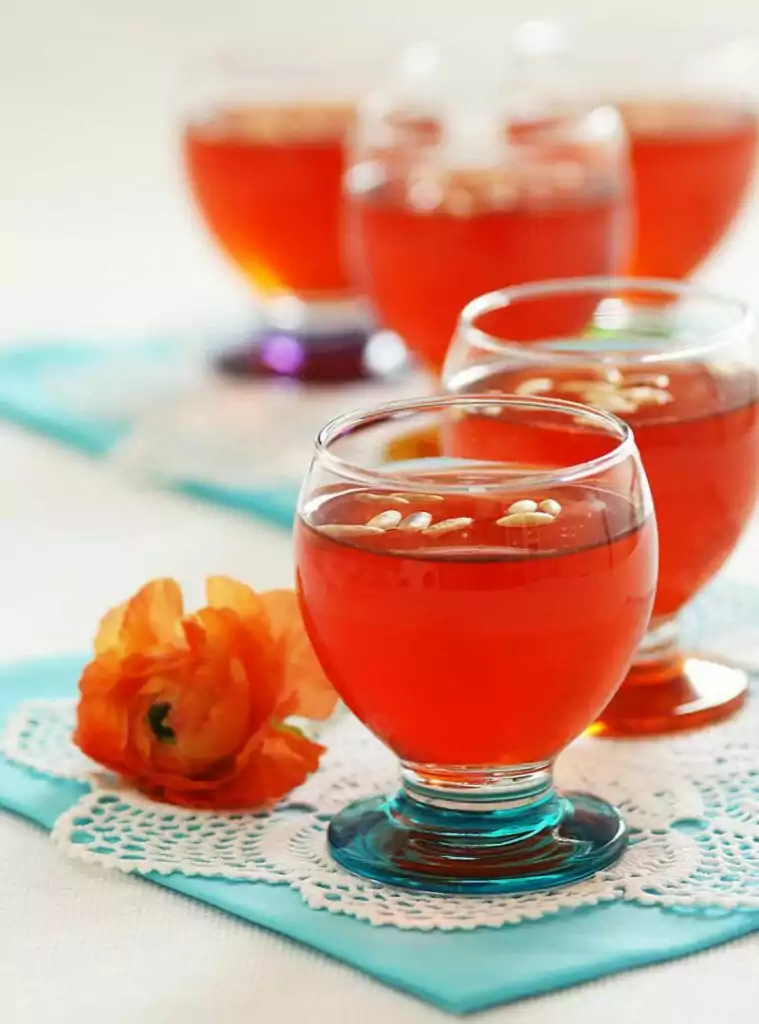
‘Lohusa Şerbeti,’ charmingly known as Puerperal Sherbet, is an emblem of Turkish tradition. This vibrant red drink beautifully swirls together sugar, water, and red food coloring, enhanced by spices.
Depending on the brewer’s preference, it might carry notes of cloves, rose petals, or cinnamon. Its sweetness is seen as a symbol of joy, and it’s shared in celebrating new mothers or when friends and family pay visits.
Salep (Drink With Milk And Salep Powder)
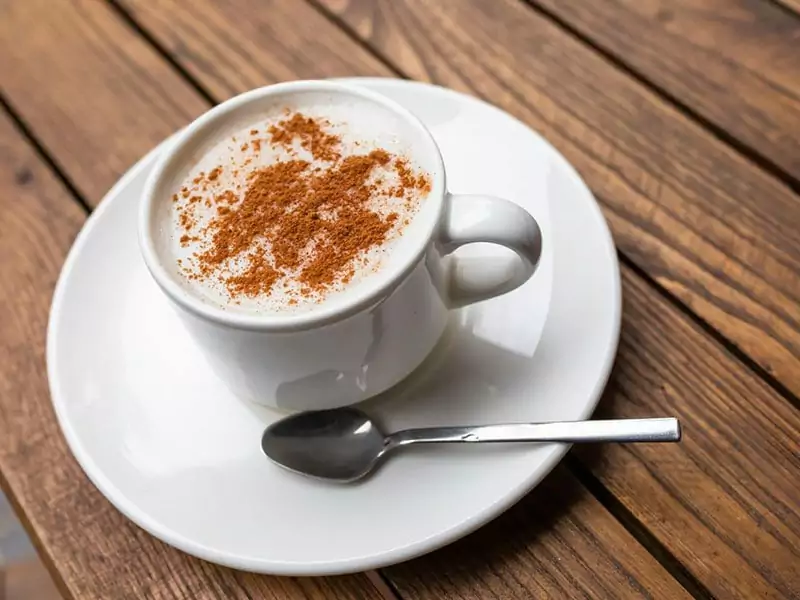
Salep, a cozy winter drink, brings warmth to the chilliest of days with its creamy blend of milk, cinnamon, and salep powder, derived from the starchy tubers of wild orchids. This fragrant concoction offers a mild, soothing flavor that embraces the senses.
Also, the very same salep powder lends Turkish ice cream its renowned thickness and melt-resistant quality. However, keep in mind wild orchids’ dwindling numbers have made genuine salep a bit of a luxury.
And, while supermarkets do stock packaged salep drinks, these are likely to contain cornstarch substitutes instead of the real deal.
Yayık Ayranı (Turkish Buttermilk)
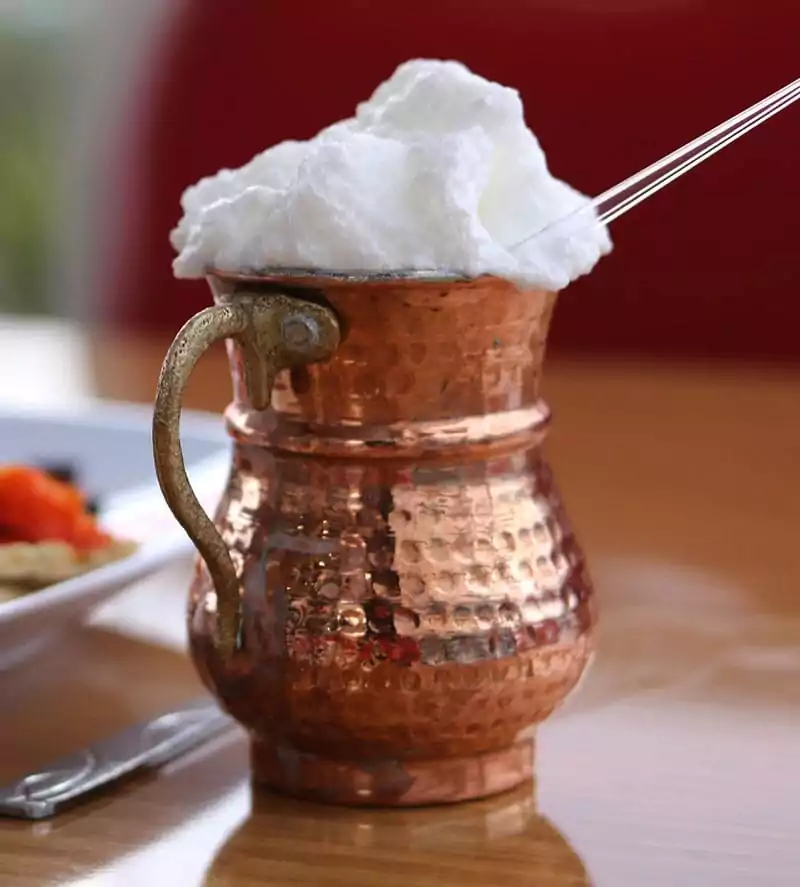
Yayık Ayranı is a traditional delight made through an intriguing process of fermenting the by-products of butter-making.
With just three key ingredients – water, salt, and churned soured yogurt, it’s then churned traditionally in skin bags, wooden/metal barrels, or modern machines.
You will find it abundant in local markets. Although it carries a flavor profile similar to Ayran, a cold savory yogurt-based beverage, they aren’t the same.
Cypriot Drinks
Zivania (Cypriot Pomace Brandy)
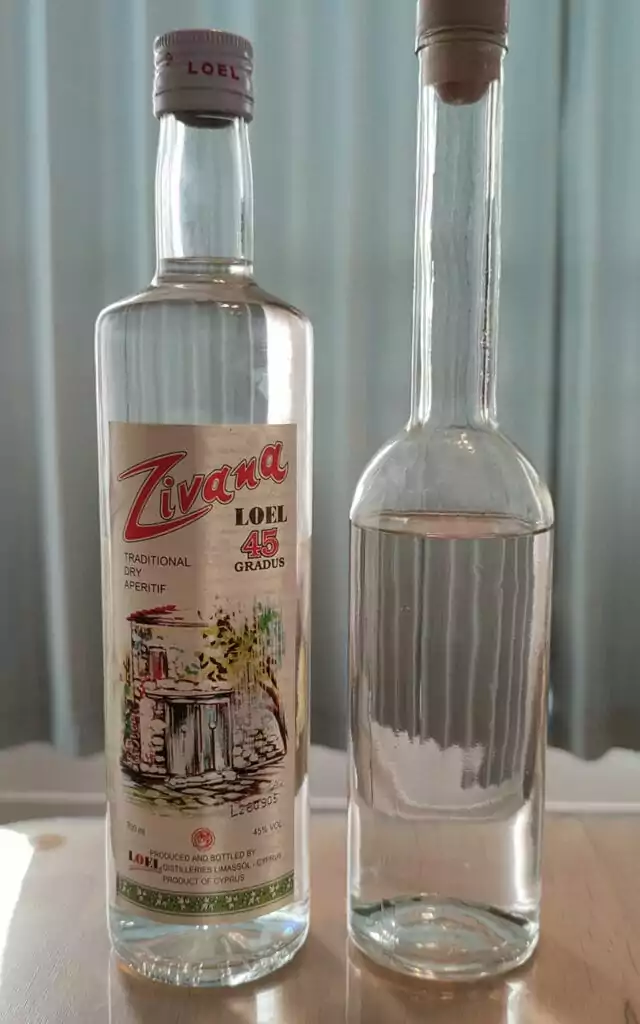
Zivania, a colorless brandy from Cyprus, is made from pomace, a type of grape, and dry wines. It’s potent, with an alcohol content of at least 45%, and makes the Greek Ouzo seem mild. Served cold, it’s purely unsweetened but with a subtle raisin aroma.
In Cyprus, people sip Zivania with dried nuts, Tsamarella, and Luntza. They pair so well! Tsiakkas is one of the top brands I’ve tried.
Commandaria (Cypriot Sweet Dessert Wine)
Commandaria, also known as Commanderia or Coumadarka, has such a historic allure. This fortified wine, you see, has been around for more than 4000 years, earning a title from Guinness World Records as the oldest named wine! [2]
Though its current name, linked to a Cypriot estate called “Commandaria” (which hints at “military headquarters”), was only tagged by the Crusades in the 12th century. Before that, it was known as “Nama.”
Commandaria’s distinctive essence arises from sun-dried Cypriot grapes, the blue mavro, and the white xynisteri, delivering an ABV of 15% to 20%. It has this deep amber hue, turning darker over time, while its flavor swirls with sweet, rich notes of nuts, honey, citrus, and cocoa.
Yemeni Drinks
Shahi Haleeb (Milk Tea)
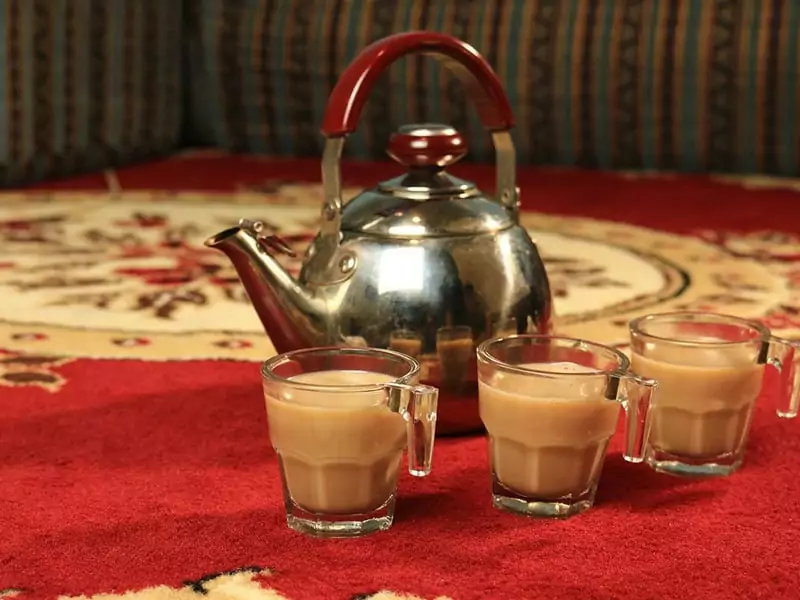
Shahi Haleeb, also called Haleeb Shai, Shai Mulaban, or Shai Adeni, is a lovely drink to savor. This exceptionally sweet blend of freshly brewed black tea and condensed or evaporated milk carries the subtle warmth of spices like cloves and cardamom.
Sipping it, I could taste the optional dash of sugar, making it an ideal companion for chilly evenings.
Naqe’e Al Zabib (Raisin Beverage)
Naqe’e Al Zabib, a non-alcoholic beverage, starts its journey with humble raisins. They’re bathed and soaked in water for several hours, patiently waiting to be extracted for a refreshing juice.
It has a close kinship with Nabidh, a traditional drink brewed from dates. Sipping Naqe’e Al Zabib reminds me of the delicate balance between tradition and innovation that flavors numerous culinary masterpieces.
Armenia Drinks
Armenian Wine

Armenia, a cradle of winemaking, holds rich traditions stretching back to ancient times, with wineries like Areni-1 that were buzzing as early as 4100 BC. The soul of Armenian wine lies in its local grapes – the white Voskehat and Kangun, and the red Areni Noir.
If you ever cross paths with Areni Noir, it’s a fascinating blend, like a sibling to Merlot and Pinot Noir, with grassy and herbal undertones peppered with hints of spices and sour cherries.
For me, the highlight is its distinct notes of vanilla and spice, gifts from the locally crafted oak barrels used in aging. The labels Zorah Karasi, Keush Origins Brut, Zorah Voski, Noa ‘Noah of Areni,’ and Highland Cellars ‘Koor’ Dry Red hold a special place in my wine-loving heart.
Armenian Brandy
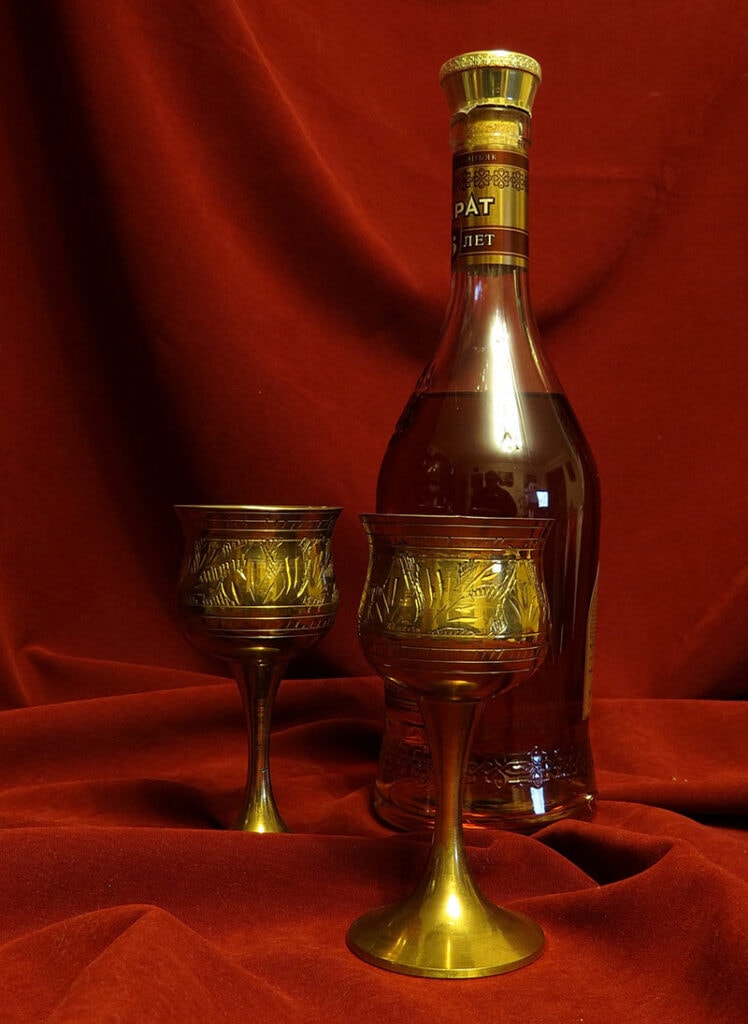
In Russian-speaking territories, Armenian brandy is celebrated as Konjak, a nod to the famous Cognac. The name dates back to the 1900 Parisian Cognac Exhibition, where this spirit won the judges’ hearts, earning the right to bear the Cognac title.
Post-WWII rules have since prompted a shift back to “Armenian brandy” globally, but the charm of the Cognac moniker lives on in Russian-speaking nations.
Beneath its historic appeal, Armenian brandy boasts a harmony of flavors – a bouquet of herbs, dried fruit, and distinct vanilla and chocolate undertones. Winston Churchill, himself reportedly fancied this captivating elixir.
Top-tier brands like Ararat, Kilikia, and Noy are proud ambassadors of this Armenian treasure. If you’re dipping your toes in, I’d suggest starting with younger samples, like the 5- to 7-year-old varieties.
Oghi (Armenian Fruit Spirit)
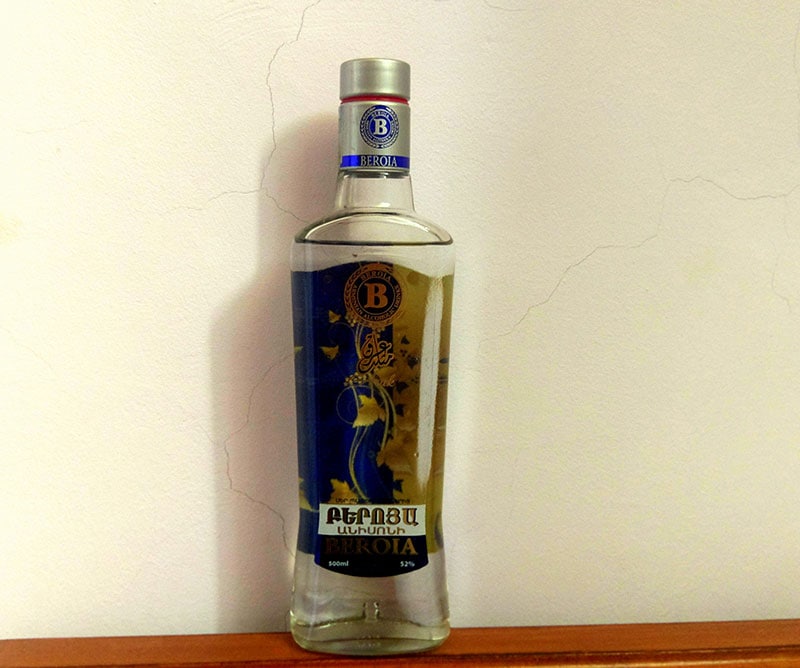
Oghi, sometimes dubbed as Armenian vodka, has its unique identity, with fans saying it’s an entity apart from vodka.
This versatile beverage welcomes a range of fruits like pears, plums, berries, grapes, and more in its creation. Its flavor complexity goes further as it embraces enhancements from herbs and spices, such as anise, mastic, orange peel, and cardamom.
Tti Oghi, Khaghoghi Oghi, and Tsirani Oghi stand out as loved variants, starring mulberries, grapes, and Armenian apricots respectively. Homemade versions may have a hefty alcohol content, ranging from 40% – 80% ABV.
Unlike traditional vodka, which is odorless and neutral, Oghi carries a distinct fruity aroma and taste, making each sip an exciting moment.
Moroccan Drinks
Maghrebi Mint Tea
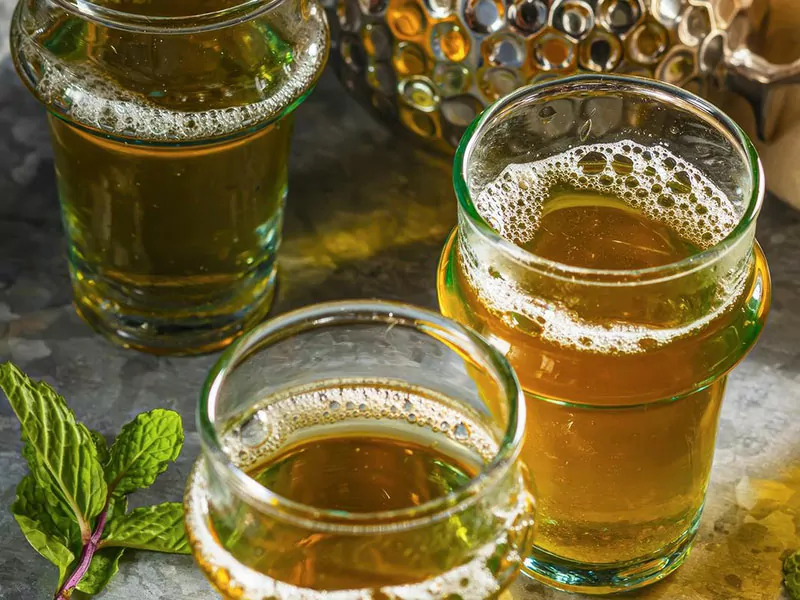
Maghrebi mint tea, a popular drink across North Africa, particularly in Morocco, offers a soothing fusion of gunpowder green tea, fresh spearmint leaves, and sugar. These ingredients marry in boiling water, birthing a flavor medley where bitterness meets sweetness in harmony.
Absence of mint? No problem. Other herbs like tree wormwood, sage, or lemon verbena can step in. This tea is served in small glasses and represents hospitality and generosity in a warming sip. Plus, you may pair Maghrebi with lovely Moroccan treats for an authentic combo.
Aside from its symbolic value and taste, it’s a wellspring of health benefits, aiding sleep quality, stress relief, and boosting immunity.
Mahia (Moroccan Brandy)
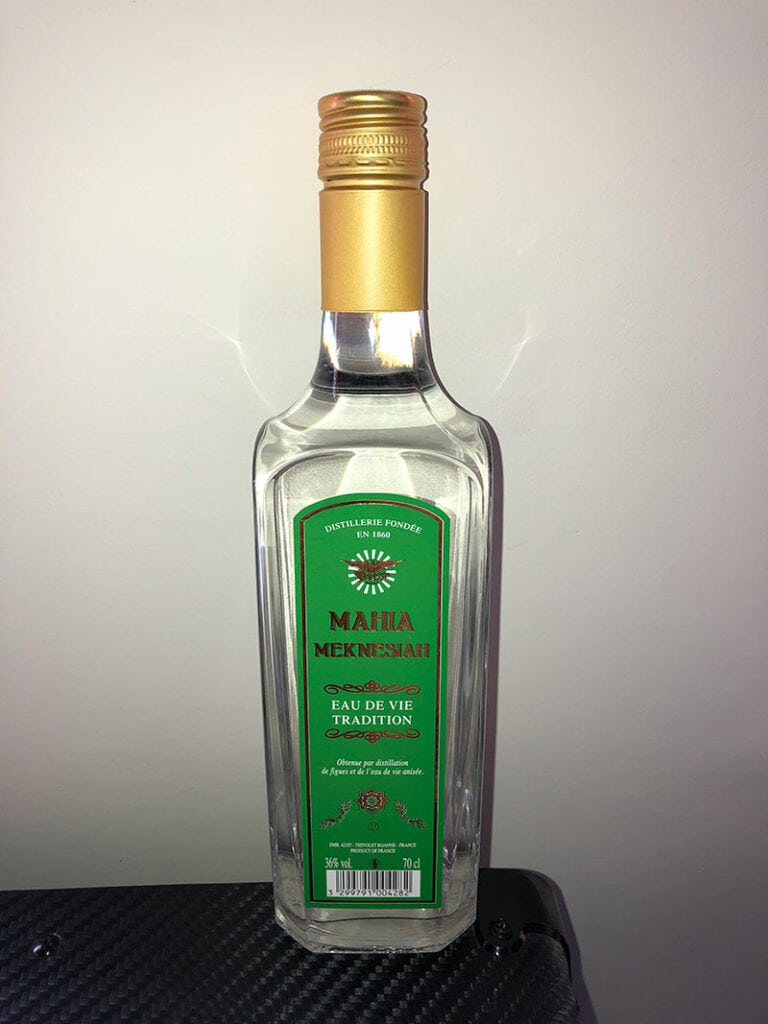
Mahia is a modestly priced alcoholic beverage rooted deep in Moroccan Jewish culture. The drink combines dates or figs with botanicals such as anise seeds, rose water, ginger syrup, and pomegranate juice.
After many Moroccan Jews left the country in the 20th century, Mahia saw a dip in popularity. Yet, even today, it retains a certain presence and continues to flavor Moroccan gatherings. With an alcohol content of around 40%, it does pack a punch!
Khunjul (Spiced Tea)
In the chilly Moroccan winter, a mug of Khunjul, also known as Khoudenjal, has warmed me up more times than I can count. It blends galangal, cinnamon bark, ginger, cloves, mace, and a dash of the madder root as a warmly spiced herbal tea.
Found nestled between street food stalls, its aromatic scent is irresistibly inviting. The spicy flavor profile is rounded off with a touch of milk and sugar for sweetness.
Moroccan Wine and Beer
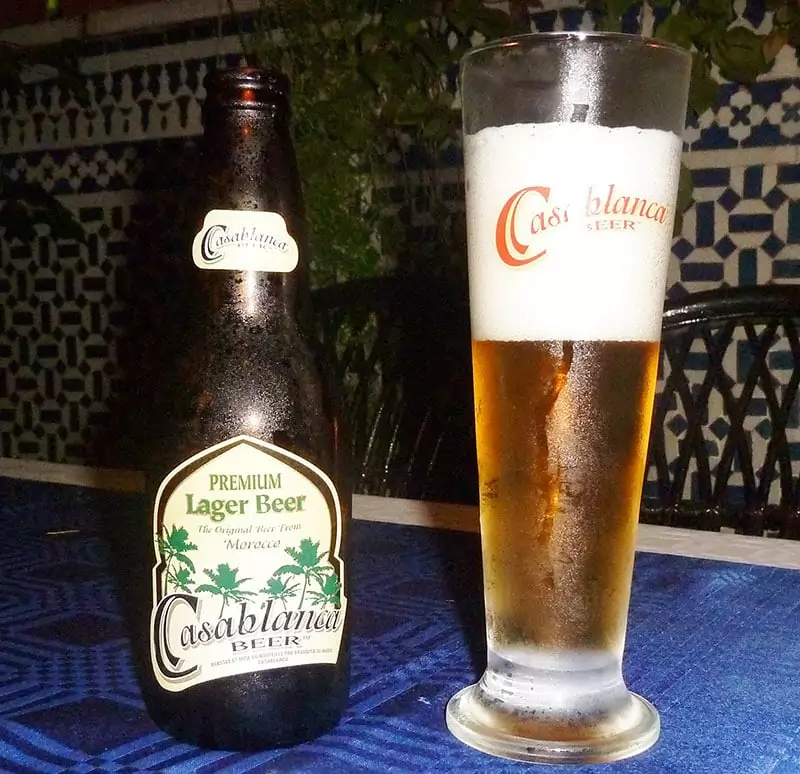
One cannot overlook the significant place that wine and beer hold. Moroccan laws, interestingly, permit the sale of these beverages to non-Muslim patrons. Wine production, dating back to Roman times, and beer, introduced by the French, have crafted a rich drinks culture here.
Morocco impressively ranks as the second largest Arab wine producer, with a market leaning towards red wines from grape varieties like cinsault, syrah, carignan, and grenache. Some rose wines have also garnered fame. For beer enthusiasts, Casablanca Lager and Heineken stand as popular choices.
Iran Drinks
Chai (Persian Tea)
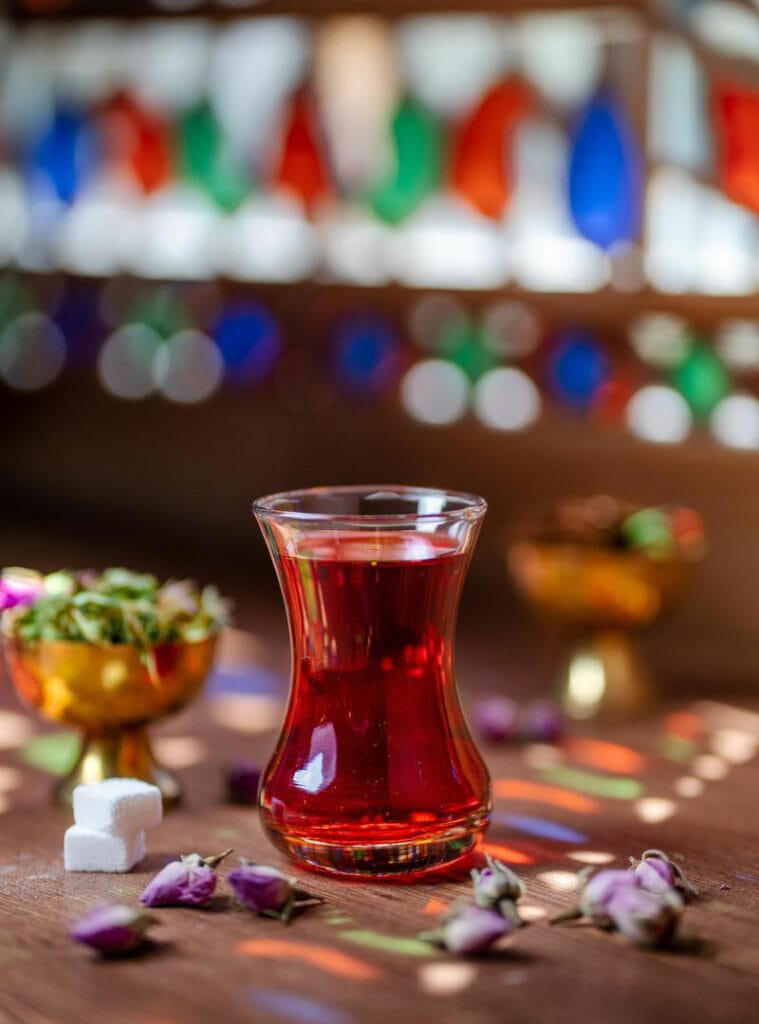
Persian tea, or ‘Chai,’ as it’s called in South India, is a drink I hold dear. Although India introduced tea to Iran in the 18th century, the Iranian version has evolved, now known as the country’s national drink.
Predominantly a loose black tea blend, it’s flavored by the warmth of spices like cloves, cinnamon, cardamom, and ginger. From the Gilan and Mazandaran Provinces of northern Iran, it comes in a deep, inviting reddish-brown hue, served in glasses without any milk or cream.
There’s a fascinating tradition of enjoying this tea with a sugar cube in the mouth. Persian chai is more than a beverage; it’s an all-day companion and a customary offering to guests that I’ve come to appreciate.
Damnoosh (Herbal Tea)
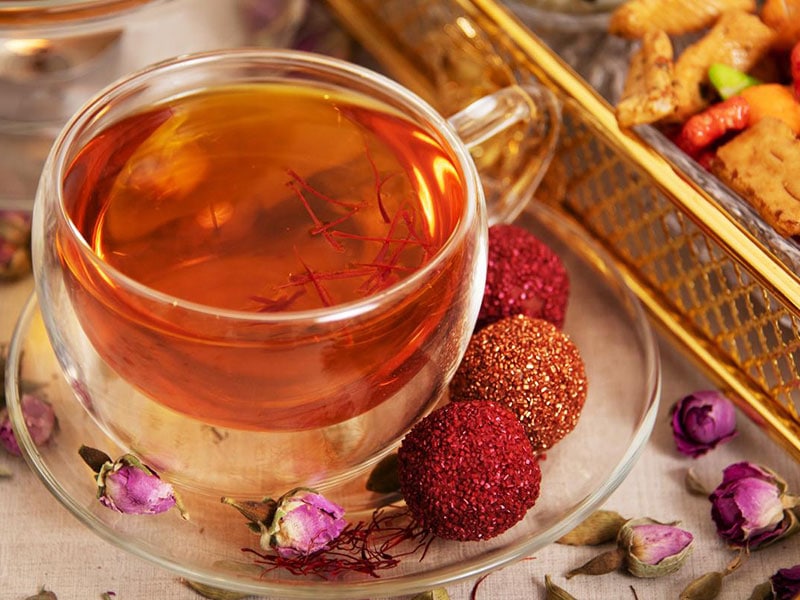
Damnoosh refers to an array of herbal teas, the stars of cooler months in Iran. There are various types of Damnoosh for you to try.
First, Damnoosh Avishan, a thyme herbal tea mixed with honey and lemon juice, is a preferred remedy for flu and colds, though not for children under 12 or pregnant women.
Then there’s Damnoosh Ustukhuddus, a lavender herbal tea I’ve found excellent for stomach issues like bloating and indigestion. Lastly, Damnoosh Babooneh, a chamomile herbal tea, is ideal for those seeking a good night’s sleep or anxiety relief.
Gol Gav Zaban (Borage Tea)
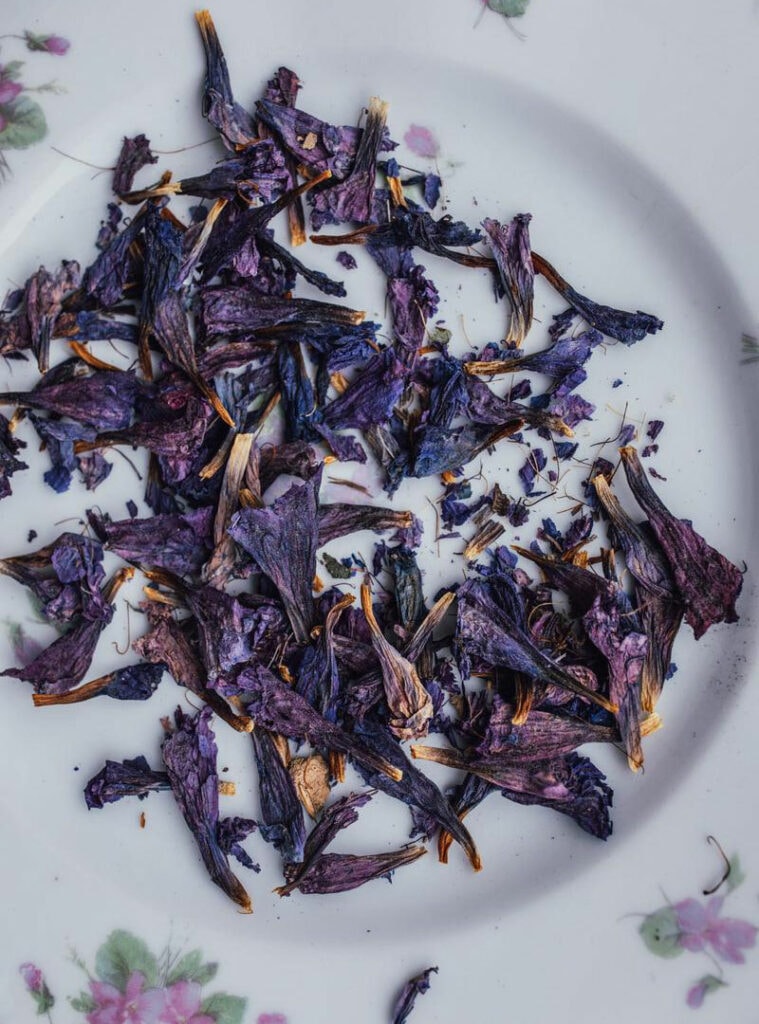
As a connoisseur of herbal teas, Gol Gav Zaban certainly stands out in my memory. This Damnoosh is brewed using borage or starflower, a plant flourishing in the north of Iran but also seen in Asia and Europe.
These flowers, in their fresh state, are blue but turn purple when dried. Creating this tea at home is simple and rewarding. A dash of sugar gives a sweet twist to its mild, vegetable-like flavor and subtle cucumber aroma.
I remember it not just for its taste but also for its soothing properties, calming the nerves and alleviating cold symptoms. A word of caution, though, remember to wear gloves when picking the leaves, as they can cause skin irritation.
Egypt Drinks
Erk Sous (Licorice Tea)
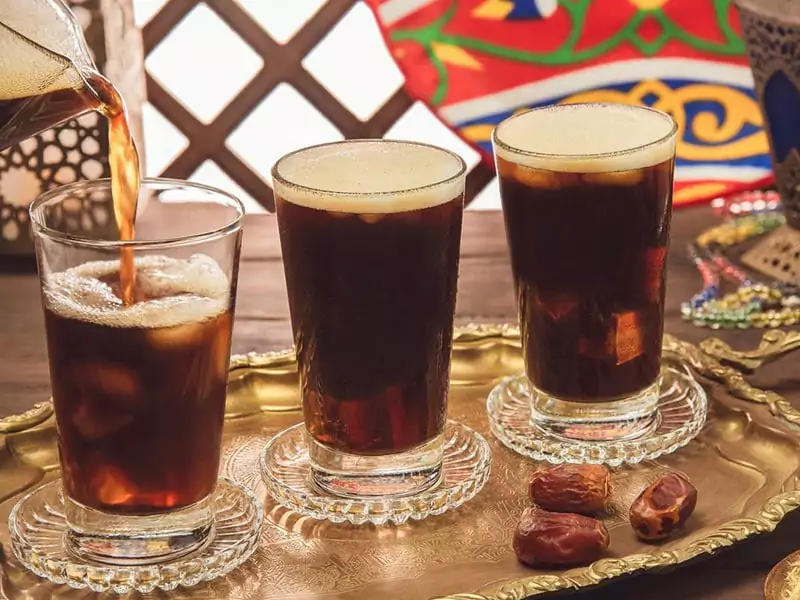
Erk Sous is synonymous with Ramadan and summertime ambiance. Back in the day, vendors would traverse bustling Cairo streets with large urns of this dark-colored beverage on their backs.
Today, it’s simpler to procure, with many shops offering it and even neighboring countries like Syria jumping on the bandwagon. The licorice root forms the base, offering a sweet-yet-slightly-bitter flavor profile.
As an individual who’s not overly fond of licorice, I admit I was hesitant to try Erk Sous. But trust me, tasting it may well change your preconceptions.
Limoon (Egyptian Lemonade)
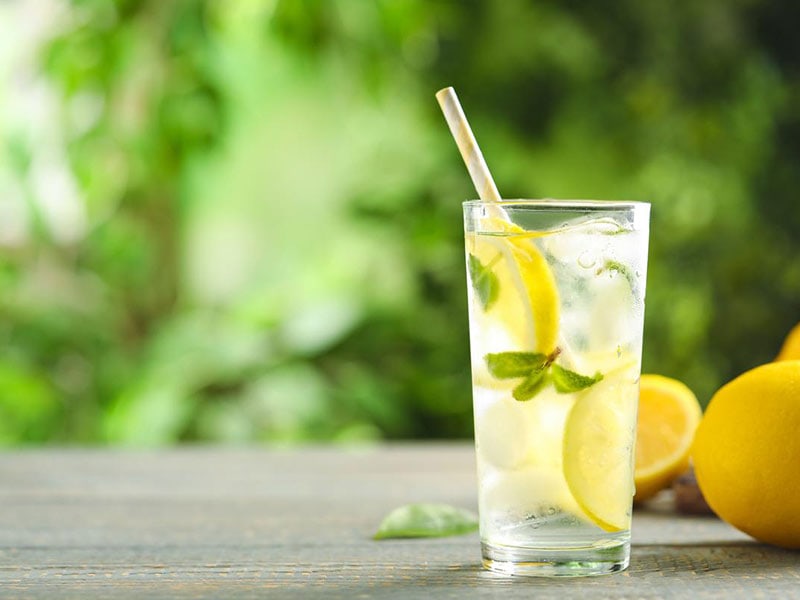
Lemons have deep roots in Egypt, dating back to ancient times. When summer hits, cooling down with a glass of lemonade becomes a ritual. While you’re in Egypt, this beverage is perfect for cooling down before exploring the tasty Egyptian street food item on the bustling street.
You’ll come across two main varieties: Aaeer Limoon, your classic cold lemonade, and Limoon Bil-na’na’, which infuses a fresh twist of mint. These thirst-quenching beverages are traditionally served sweetened with sugar, accompanied by a generous helping of ice.
Sobia (Rice And Coconut Drink)
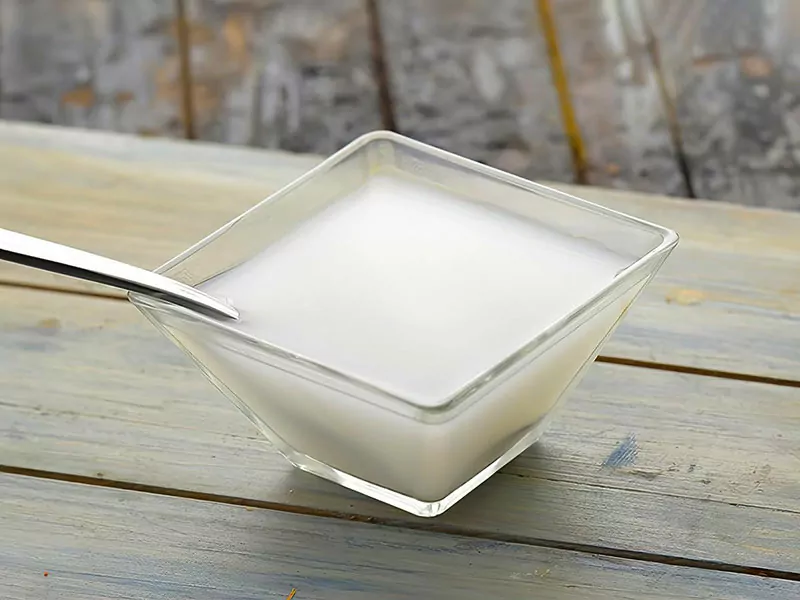
Sobia is a quintessential drink of Egypt and Saudi Arabia’s Hejaz region, seen in various forms. In Saudi Arabia, it’s a concoction whipped up from grains or bread, while Egypt prefers a creamy mix of dairy, rice, sugar, coconut powder, and optional spices.
Don’t be fooled by its usual white hue, as Sobia can also surprise you with a spectrum of other colors. It’s sold at roadside stalls or juice bars packaged in plastic bottles. Relish it within 2 – 3 days of creation to avoid fermentation that nudges up the alcohol content.
Sobia becomes a much-desired thirst quencher during Ramadan.
Asab (Sugarcane Juice)
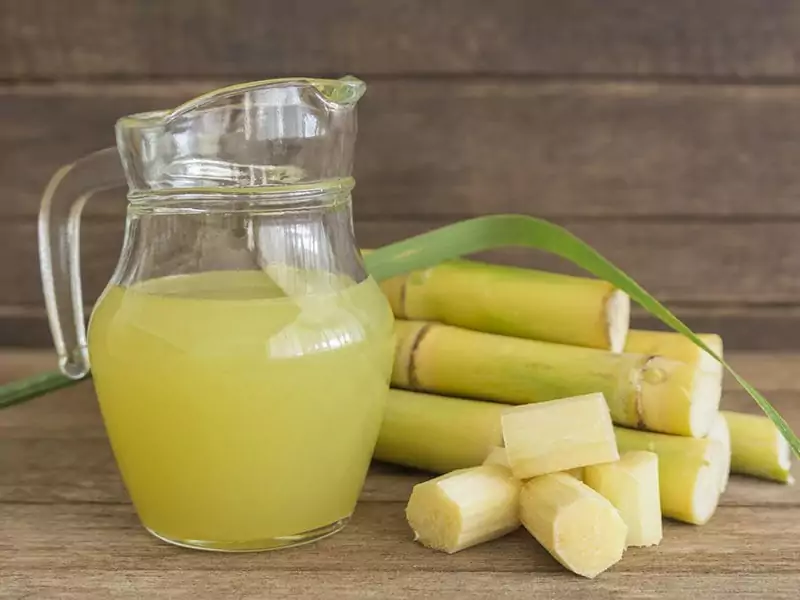
Asab, an affordable and ubiquitously available sugarcane juice, is an absolute favorite of mine when I’m in Egypt. From humble street stalls to posh restaurants, it’s everywhere. I’m instantly refreshed by one sip of this freshly pressed drink, often mixed with lemon juice and ginger.
You’ll see it sold in jugs or even plastic bags. I have a soft spot for the Asab sourced from sugarcane fields in Upper Egypt, especially Minya on the Nile River’s western bank.
Karkade/ Karkadeh (Hibiscus Tea)
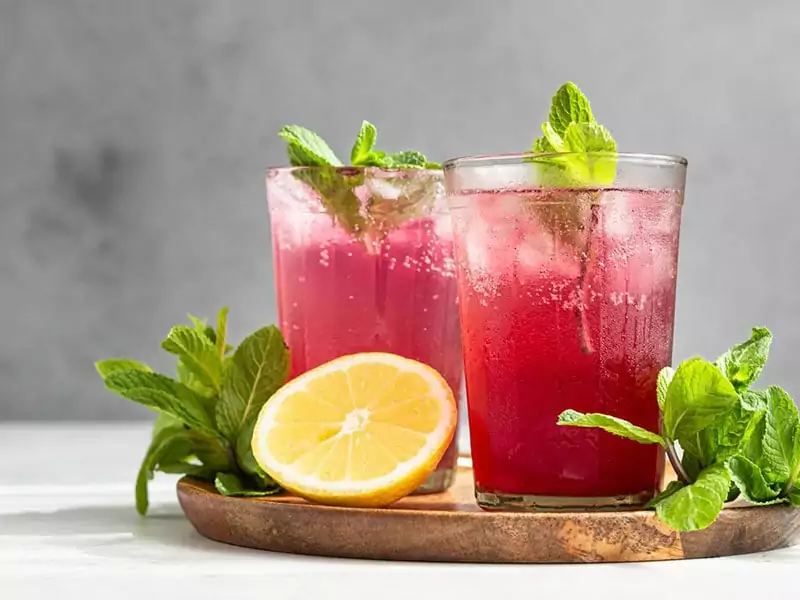
One of my favorite beverages, Karkade, is an infusion derived from the vibrant crimson sepals of hibiscus or roselle plants. My fondness for this popular Egyptian drink, which dates back to ancient times, lies in its refreshing taste and health benefits.
It’s a powerful antioxidant that reduces blood pressure, assists in weight loss, and even supports liver health [3]. Though it’s deeply rooted in Egypt, its appeal has spread across the Middle East, Africa, Southeast Asia, and Latin America.
Other
Arabic Coffee
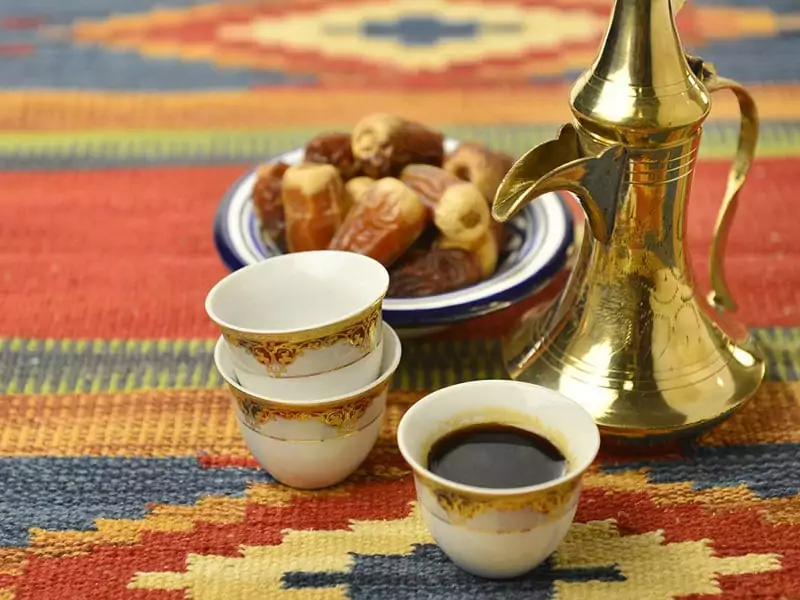
Arabic coffee, also fondly called Qahwa or Kahwa in Arabic, goes beyond just a beverage for me. It is brewed from lightly roasted arabica beans and carries an aromatic blend of spices like cardamom, saffron, and ginger.
The infusion gives it a sweeter, smoother taste, a departure from the typical bitterness of other coffees. Sometimes, I even enjoy it with sugar cubes for added sweetness.
Even though it’s pricier than other varieties, believe me, it’s worth every penny. It’s also the national drink of Bahrain.
Sharbat (Sweet Cordial)
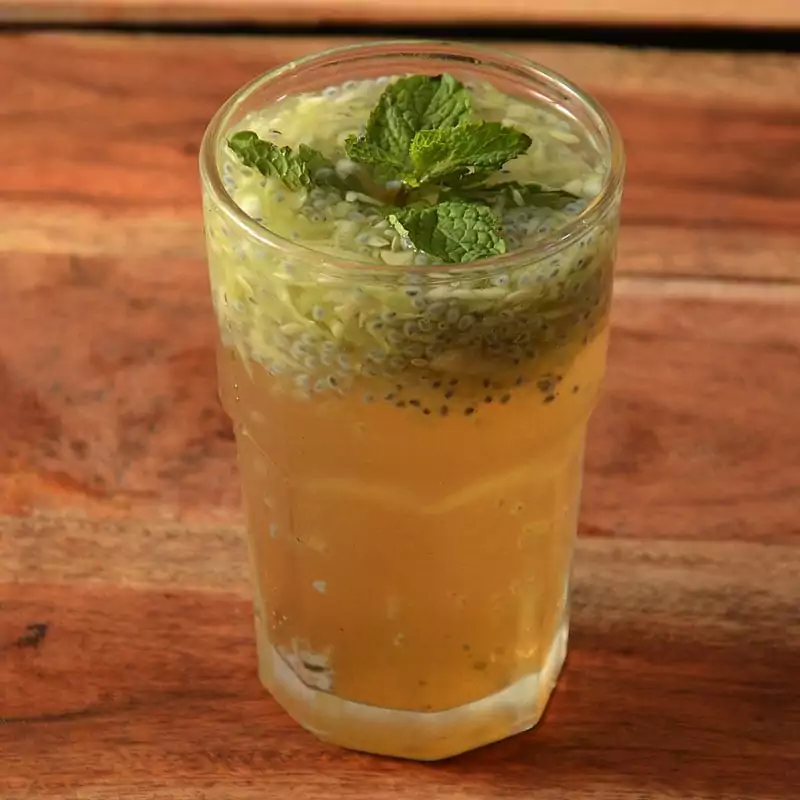
When I think about refreshing beverages, Sharbat springs to mind instantly. Originating from Persian culture, this sweet drink has found fans far and wide – from the Middle East to the Balkans, even South India.
Its preparation involves a mix of water and sugar. The key ingredients could be anything from chia seeds, basil seeds, and fruits to falsa, known as sherbet berry.
I remember one variant I particularly enjoyed, the Almond Sharbat, made with almond extract. Intriguingly, some iterations even swap the water and sugar for milk. Best of all, it’s traditionally served chilled, adding to its cooling qualities.
Boza (Fermented Malt Drink)
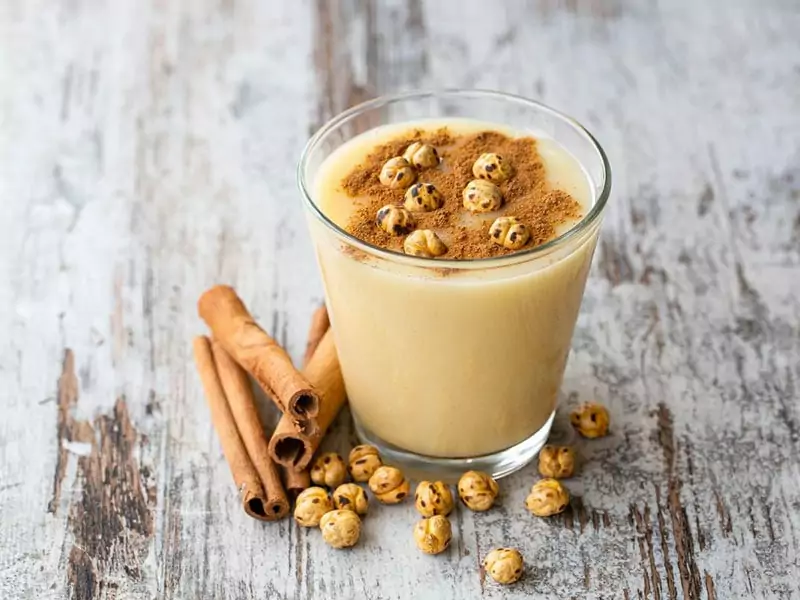
Originally from Turkey, Boza is a thick malt drink that has gained recognition in diverse corners of the globe – Western Asia, North Africa, and even Southeast Europe. Made predominantly from wheat in Turkey, it balances tangy and sweet.
Thanks to its low alcohol content, Boza is acceptable in Muslim countries and can even be served to kids. I always appreciate its rich nutritional content, with iron, vitamins, and healthy bacteria. But remember, due to Boza’s tendency to spoil, you should always refrigerate it.
Laban (Middle Eastern Buttermilk)
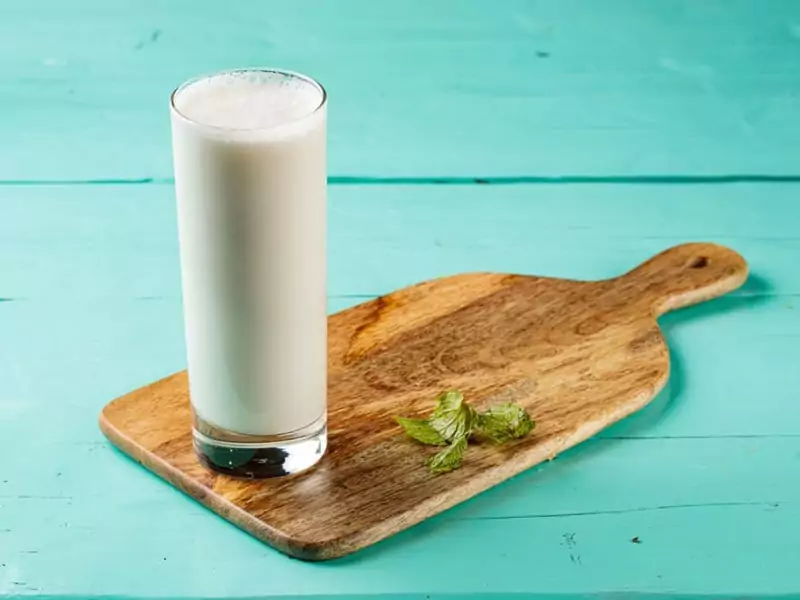
Laban, also called Leben or Liben, is widely loved in the Middle East. This drink is like liquid strained yogurt. It’s made by fermenting goat’s milk for 24 hours, then churning it and taking out the butter.
This process differentiates it from Western buttermilk, creating a drink with a sweet, tangy flavor reminiscent of yogurt. I felt my gut health improve each time I drank it, owing to its richness in probiotics.
Beyond just the benefits for the gut, it also fortifies the immune system, making it an excellent choice for a health-conscious individual like myself.
Jallab (Date And Molasses Drink)
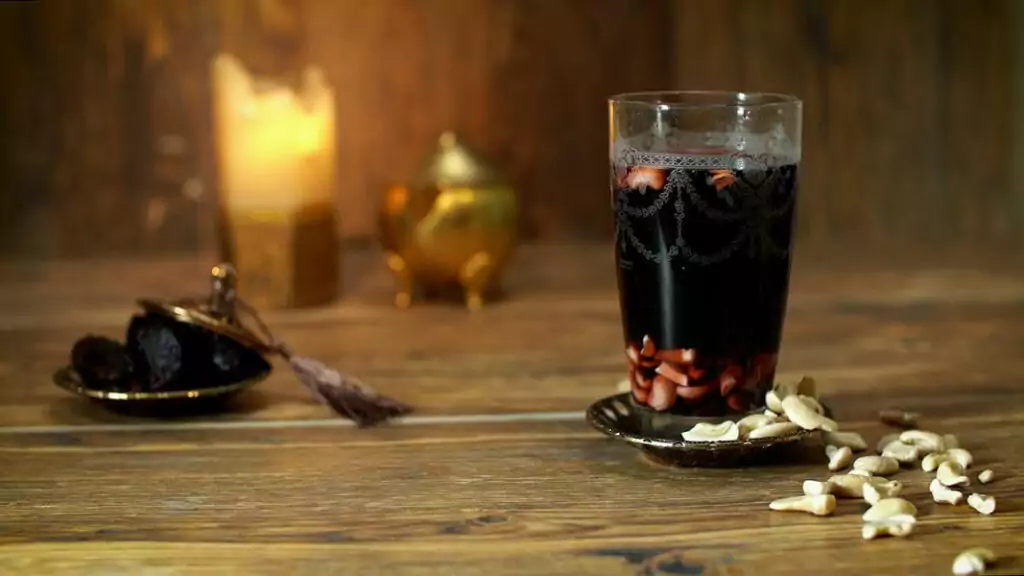
I have a soft spot for Jallab, a distinct Middle Eastern beverage made from a unique date juice, grape molasses, carob, and rose water syrup. It’s served over plenty of ice after being diluted with water.
Adding raisins and nuts, it becomes a small feast in a glass. What’s even more fascinating is the occasional touch of smoked incense some people use to flavor it.
Jallab is a crowd-pleaser in countries like Lebanon, Jordan, and Syria, especially during sweltering summers and the holy month of Ramadan,
Sahlab (Middle Eastern Pudding)
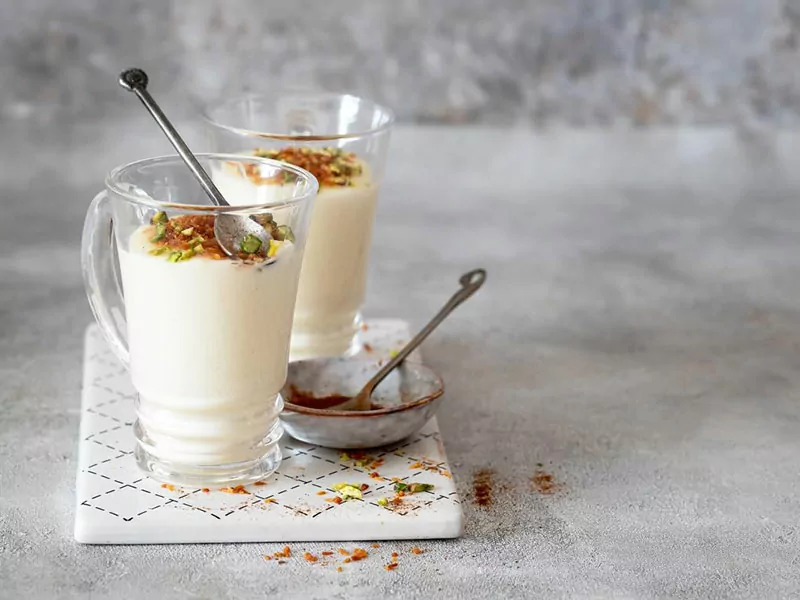
Sahlab, adored in numerous Levant nations, is often compared to the Turkish drink, Salep. Although similar, Sahlab swaps out wild orchid tubers for cornstarch.
Milk, mastic, rose water or orange blossom, syrup or sugar, and spices also join the mix, culminating in a lusciously creamy concoction. Some even liken it to a Middle Eastern latte. Topped with crushed nuts, it’s the ideal winter warmer.
As a staple for local Christians, Christmas just wouldn’t be the same without it.
Qamar al-Din (Apricot Drink)
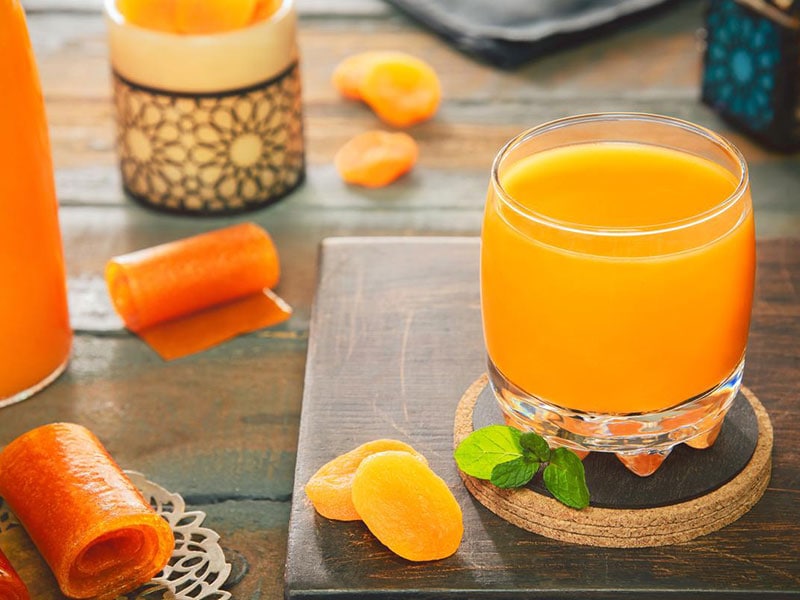
Qamar al-Din, a refreshing drink celebrated in Ramadan, originates from apricot leather. To prepare, you need to soak the paste overnight and blend it with water. Add a splash of rosewater or orange blossom water for a scented twist.
Keeping a few small pieces of apricot leather makes the texture even thicker. Once it’s cooled, you get a sweet, fruity drink brimming with vitamins. A glass of chilled Qamar al-Din is a popular choice during Ramadan.
Tamer Hindi (Tamarind Drink)
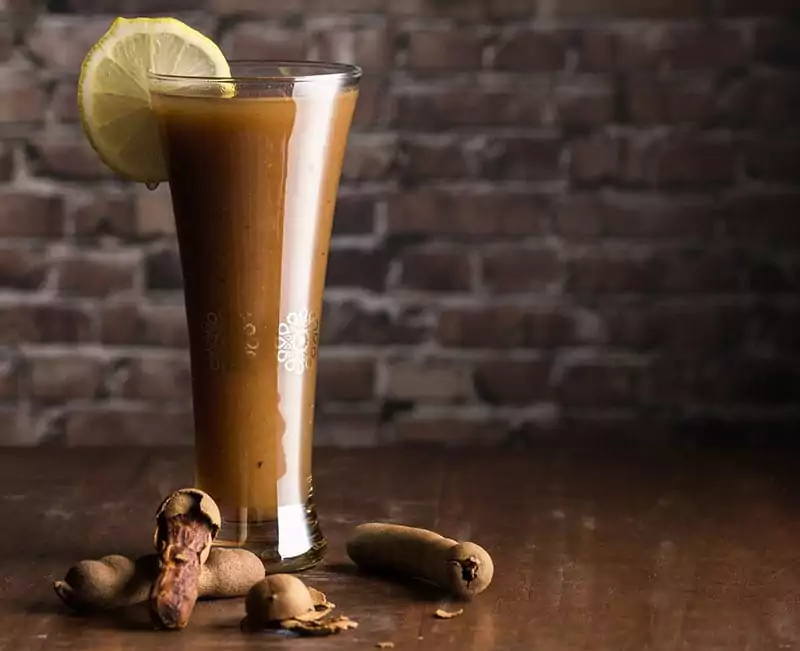
Tamer Hindi, a sweet and sour beverage, takes me back to vibrant Ramadan festivities. It’s crafted from tamarind paste, sugar, and water, forming a staple refreshment during this holy period. Adding aromatic rose water or ginger juice injects a personal touch to the drink.
On top of being delicious, Tamer Hindi also offers impressive health benefits. It contributes to reducing risks of ailments such as cancer and diabetes and promotes heart and liver health, making it more than just a tasty drink [4].
Dried Lime Tea
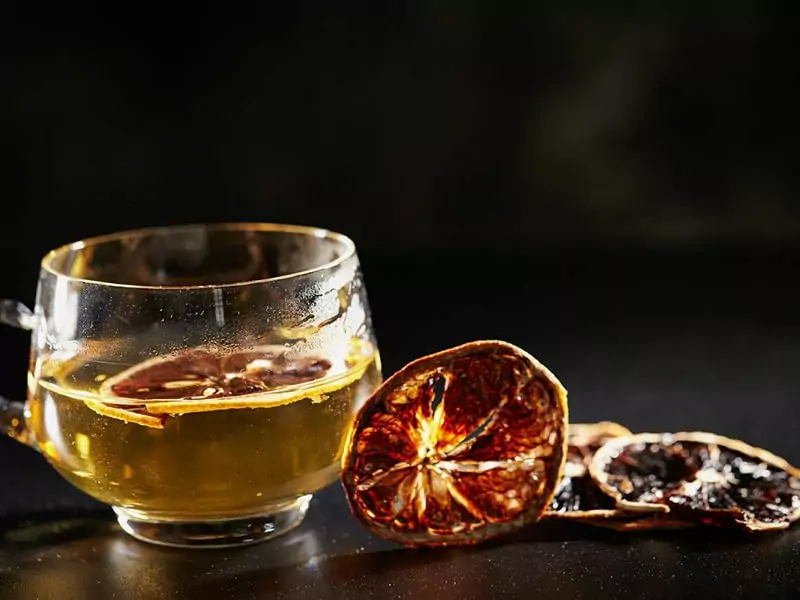
In Iraq and Persian Gulf countries, there is a soothing beverage known as dried lime tea. Locally referred to as Loomi tea or Chai Noomi Basra, it primarily comprises deseeded, dried, and pickled limes.
Its tangy flavor is pretty intense yet can be tempered with sugar or honey. You might even throw in a pinch of saffron for an aromatic twist. Furthermore, this vitamin-rich herbal tea has a reputation for calming upset stomachs.
Limonana (Mint Lemonade)
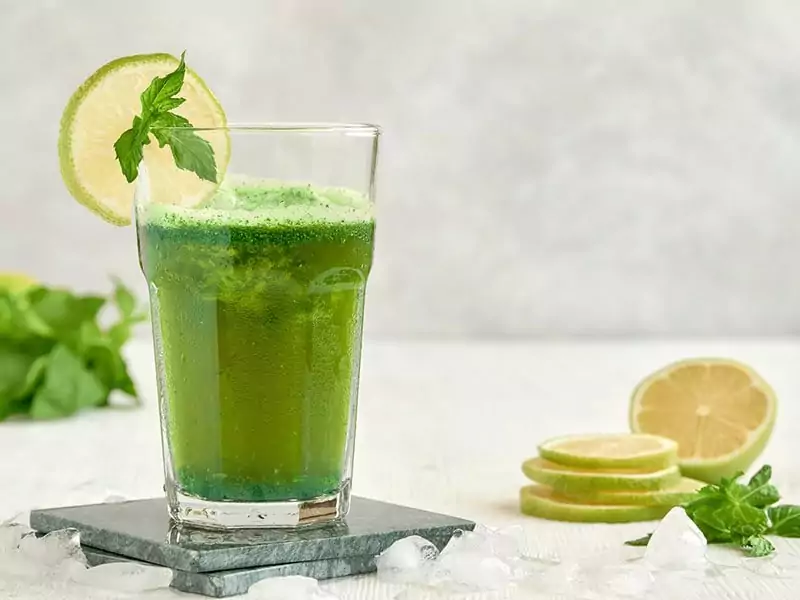
One of the most refreshing drinks I know is Limonana. It’s a twist on traditional Western lemonade, infusing it with mint leaves or mint syrup. This mix is suggested by its very name, “limon” for lemon and “nana” for mint, in both Arabic and Hebrew.
The process involves either chopping mint leaves into lemonade or blending them with lemon juice and ice cubes. Its popularity spikes in the summer heat, and for convenience, it can be prepared in advance and stored chilled.
Arak (Anise-Flavored Spirit)
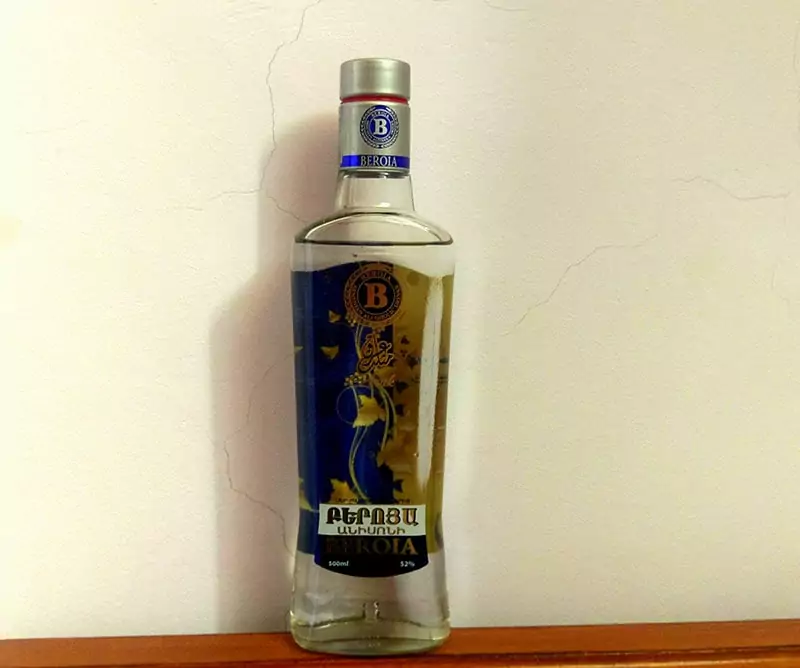
Arak is a distilled alcoholic beverage popular in the Middle East, notably Lebanon, recognized as an early flavored spirit. Made with grapes and imbued with aniseed oil, this pure, sugarless brandy exudes a sweet, licorice-like aroma.
Due to its high alcohol content, ranging from 40% to 63% ABV, it’s meant to be enjoyed diluted with water and ice, transforming its color from clear to captivating milk white.
Ayran (Yogurt-based Beverage)
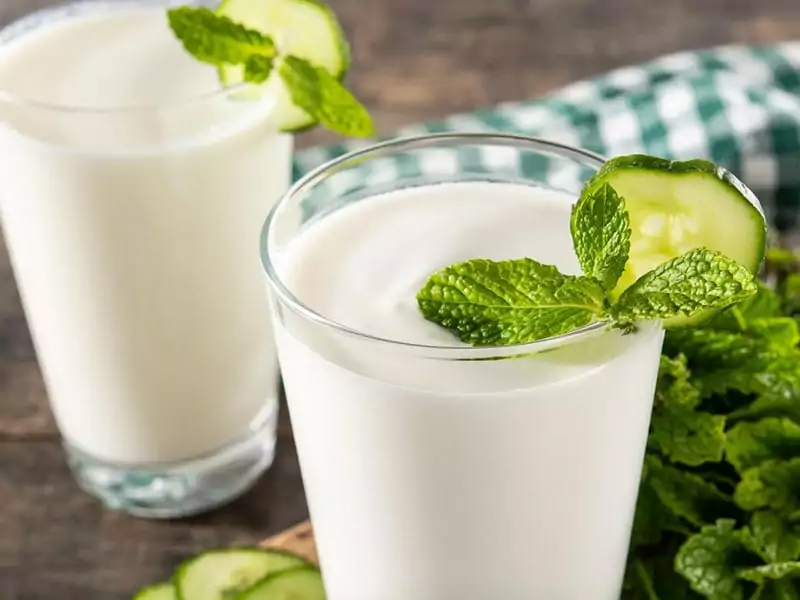
Known as Ayran, or by its other names Tahn, Doogh, and Shaneena, this drink has gained massive popularity in the Middle East and beyond. Its creation starts with yogurt, which gets diluted in salt water and is often enriched with mint or other herbs, giving it a tangy and salty flavor.
Some like to add a twist of black pepper or diced cucumbers for an extra flavor kick. This concoction is typically served chilled in a glass or copper mug and can be carbonated. Ayran is a wonderful counterpoint to rich or spicy foods like kebabs or curries.
Kefir (Fermented Milk Drink)
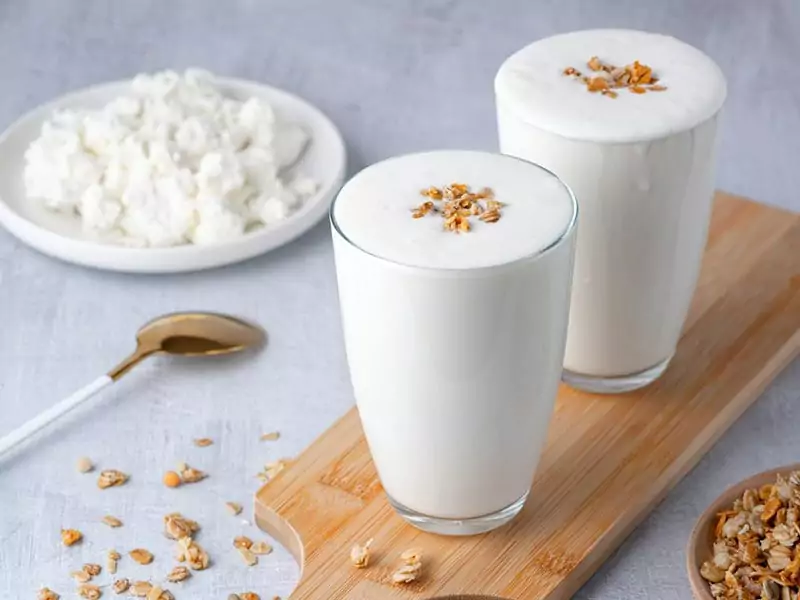
Kefir is a fascinating story of symbiosis. Its main characters are yeast and bacteria, living harmoniously in tiny white, gelatinous orbs known as Kefir grains. I vividly recall the first time I stirred these grains into milk, awaiting the transformation.
The choice of glass container felt oddly appropriate, knowing metal wouldn’t do justice to the tangy result. With time, the mixture fermented, rewarding my patience with a drink mirroring the texture of yogurt and the taste of Aryan.
Born in North Caucasus and christened with a Turkish name, Kefir offers an impressive resume. It indeed contributes to gut and bone health, even outdoing Greek yogurt with its broader spectrum of probiotics [5].
Camel Milk

Camel milk is a staple in the arid Middle East, particularly among the Bedouins. This desert nomad community swears by it, with their lifestyle intertwined with the camel.
On my first taste, its thick, creamy texture fascinated me, while the sweet yet sharp and salty flavor, unlike cow milk, was intriguing.
As I dug deeper, I learned it’s safe even for those with lactose intolerance, offering a more nutrient-dense profile, richer in vitamins and minerals, and lower in saturated fats than cow milk.
However, like all good things, there’s a catch. It carries a heftier price tag and is generally sold raw and unpasteurized.
Soft Drinks
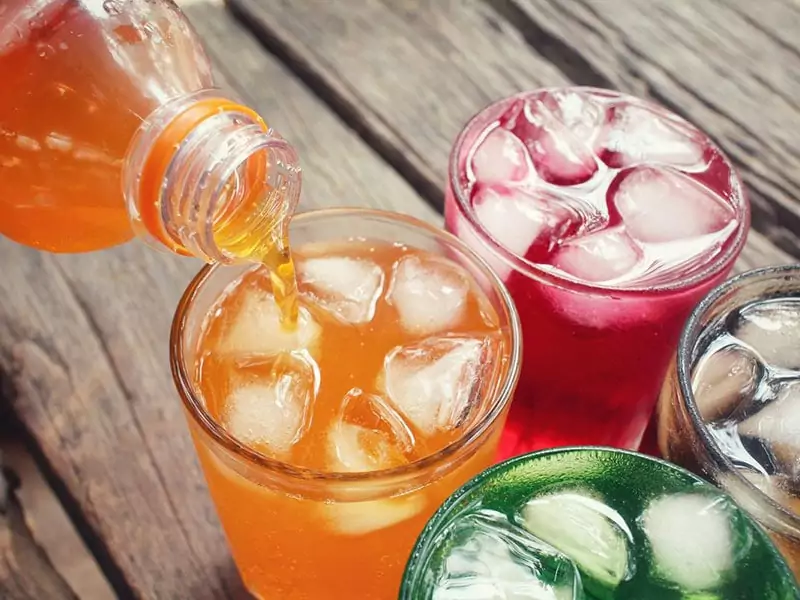
In Middle Eastern countries, soft drinks are a big hit, particularly due to the restrictions on selling alcoholic beverages. Ramadan is a time when soft drinks become particularly popular. Brands like PepsiCo, Mirinda, Vimto, Coca-Cola, and Mecca-Cola are highly sought after during this period.
Locals appreciate these beverages for their ability to provide a swift boost of energy. This is particularly valuable after a long day of fasting. With every opened can, a refreshing and satisfying fizz adds to the overall experience.
Pomegranate Juice
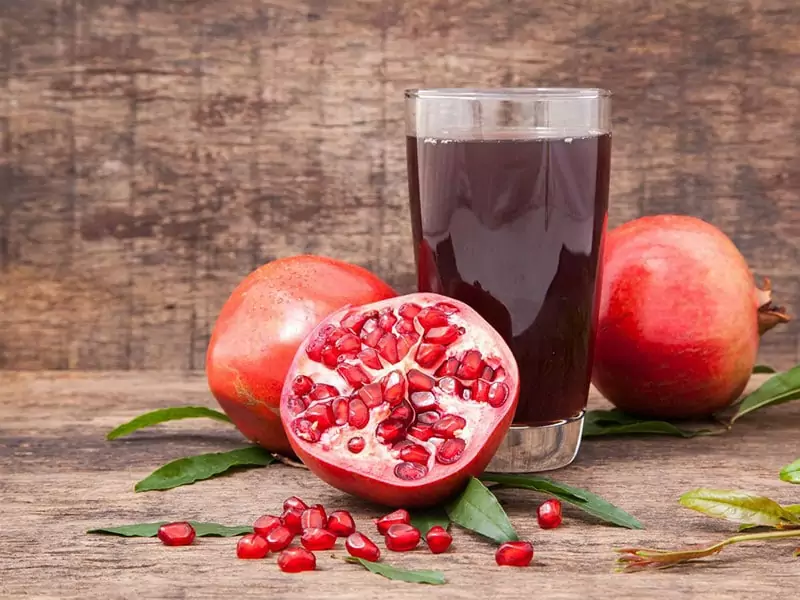
Pomegranate juice, commonly known as Ruman or Rumaan in Arabic, is a renowned beverage in major pomegranate-producing countries such as Turkey, Israel, Iraq, and Syria.
This brightly colored drink has had historical significance in the Middle East since ancient times. It’s often enjoyed either in its pure form for a refreshing feel or as a syrup diluted with water.
A chilled mixture of this juice with orange blossom, rose water, or orange juice can provide immediate relief on hot days.
Besides being a hydrating drink, pomegranate juice is also known for its potential health benefits in fighting chronic diseases like cancer, diabetes, and Alzheimer’s [6].
Common Ingredients in Middle Eastern Drinks
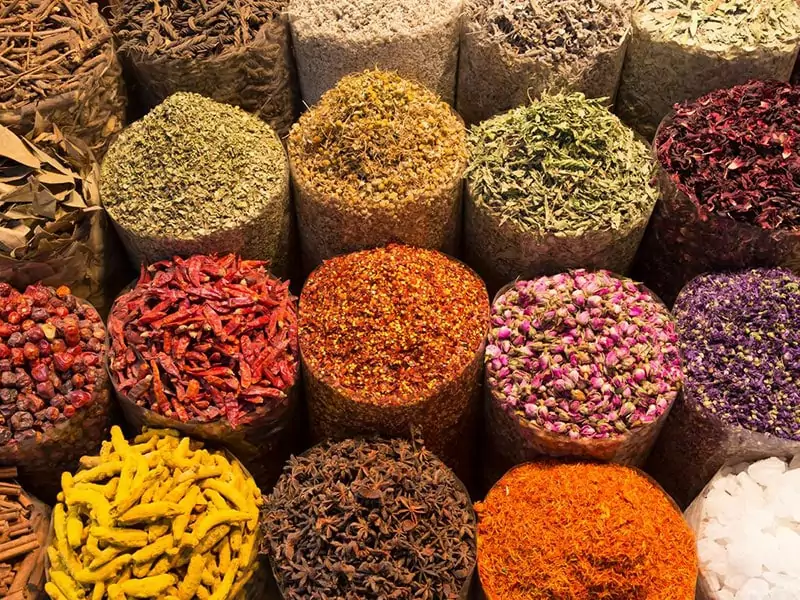
- Spices: Cardamom, saffron, and mint are often used in both hot and cold drinks. Cardamom is a key ingredient in Arabic coffee, while saffron is used to flavor and color certain Persian drinks. Mint is used ubiquitously across the region, notably in mint tea and lemonade.
- Coffee and Tea: Coffee and tea are integral to Middle Eastern drink culture. Arabic coffee, Turkish coffee, and Turkish tea are enjoyed daily and served to guests as a sign of hospitality.
- Fruits: Fruits and vegetables in the Middle East are ideal components to make drinks. Lemon, lime, pomegranate, date, and fig are examples. They are used to make juices, flavor waters, and create syrups for sweetening other drinks.
- Sugars and Sweeteners: Honey, molasses, and syrup are used to sweeten a variety of beverages, from teas and coffees to fruit-based drinks and alcoholic beverages.
- Dairy: Yogurt is a common ingredient in drinks like Ayran and Doogh, which are both yogurt-based beverages enjoyed for their cooling and refreshing properties.
- Fermented Grains: Barley and wheat are used to make drinks like Boza, a thick, slightly fermented drink popular in Turkey.
- Anise: This licorice-flavored spice is the key flavoring ingredient in Arak, a traditional Middle Eastern distilled spirit.
- Tamarind: This tangy fruit is used to make a refreshing drink called Tamar Hindi, popular in Egypt and other parts of the Middle East.
Traditional Preparation of Middle Eastern Drinks
Middle Eastern beverages, much like the region’s cuisine, are characterized by a rich tapestry of flavors and aromas, each with its own traditional preparation method, reflecting the diverse cultures and histories of the region.
One common element across various traditional preparations is using fresh, natural ingredients. Spices like cardamom, mint, and saffron are frequently used to impart unique flavors to the beverages. The spices might be steeped directly into the drink or boiled separately and then added.
The brewing of beverages, especially coffee, and tea, is a careful process often done over slow heat to fully extract the flavors. Some drinks may even call for a specific order of adding ingredients or require ingredients to be ground to a particular consistency.
Sweeteners such as honey, sugar, or fruit syrups are used, often added while the beverage is still hot, to ensure they blend well. The level of sweetness can often be adjusted to taste.
In terms of alcoholic beverages, traditional methods can include distillation, as is the case with spirits like Arak, or fermentation for beverages like wine and beer.
Additionally, the traditional preparation of Middle Eastern drinks often includes a presentation aspect. The serving of beverages is seen as a crucial part of hospitality. Drinks may be served in specific types of glassware or pots, and pouring can involve some flourish, all part of creating a shared cultural experience.
FAQs
Take A Sip Of Middle Eastern Gastronomy!
Middle Eastern drinks are undeniably intriguing, teeming with diversity and rich flavors. They’re more than just beverages; they’re gateways to exploring the cultural and historical wealth of the region.
I believe these treats offer a unique and refreshing perspective on Middle Eastern culture. What do you think? Let your opinions flow freely in the comments below! Don’t forget to like and share this article, encouraging more people to learn about the world of Middle Eastern beverages.
References
- Tea consumption by country 2023.
- Oldest manufactured wine Guinness World Records.
- Ajmera, R. 8 benefits of Hibiscus, Healthline.
- Nutritionist, N.S. – R. Top 6 health benefits of tamarind, BBC Good Food.
- Chertoff, J. Kefir vs. yogurt: Nutrition, uses, where to buy, and more, Healthline.
- Pomegranate seeds: Benefits and tips Medical News Today.

